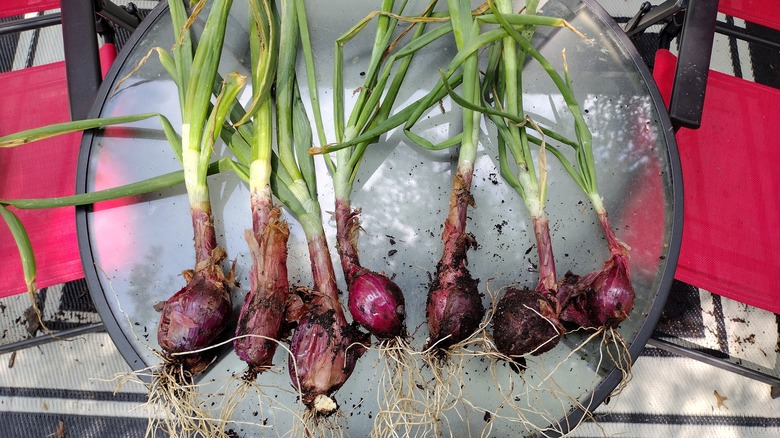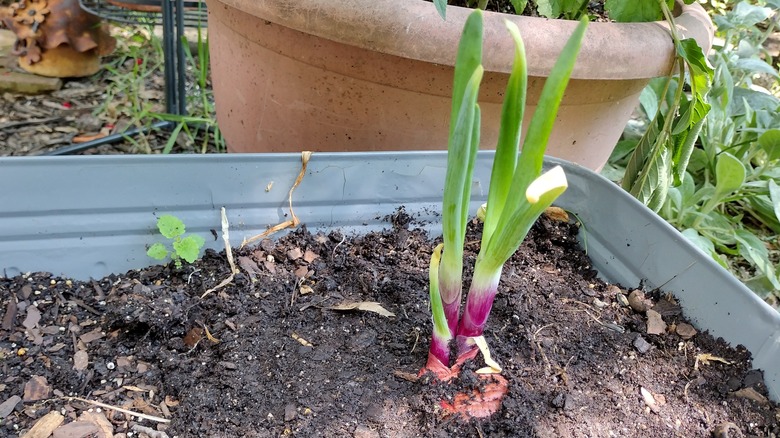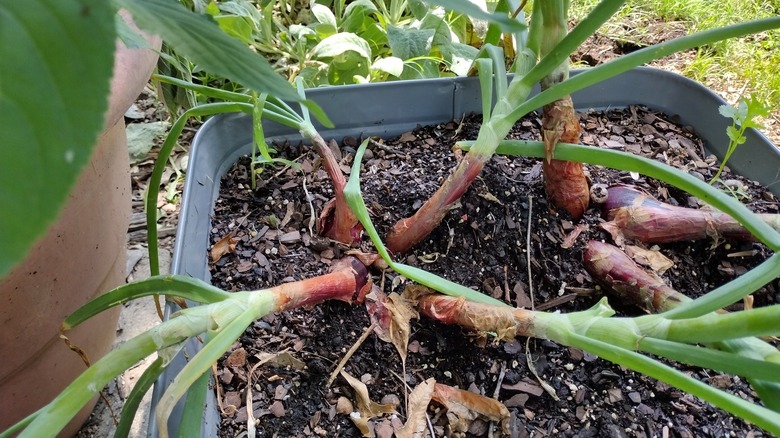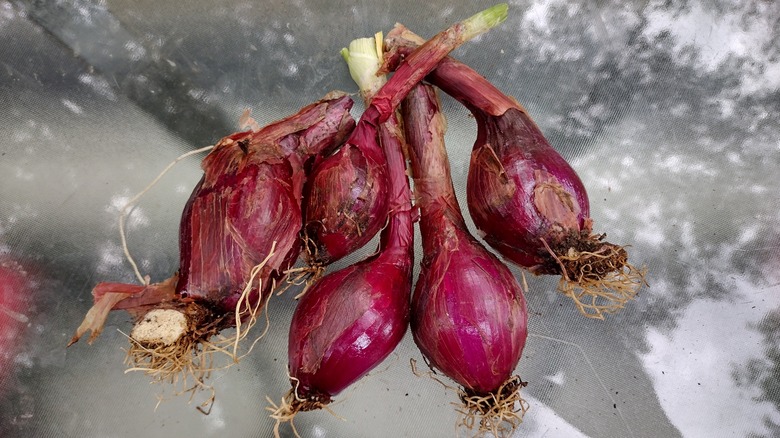We Tried Growing Fresh Onions From Old Sprouted Ones And Rejoice: No Green Thumb Required
How many onions do we really need from the grocery store? Since it's one of those items we never want to run out of, it's also one we tend to overbuy. We usually get a 5-pound bag...for two people. You know, just in case we have a hankering to make French onion soup (which we never do). Inevitably, some of those onions in that giant bag go bad and either get tossed in the compost or, more often, thrown in the garbage. Having had the experience of growing onions in our garden, we decided to use what we know to plant sprouted store-bought onions in a container to see if they would actually produce something edible.
Onions are very cold hardy and can tolerate temperatures well below freezing. We planted our store-bought red onions in late February. Although our area of Arkansas is a temperate environment, we do get extreme weather swings from single digits in the winter to above 100 degrees in the summer. We wondered if this particular variety of onion would survive the cold winter nights. Here's what happened.
Planting grocery store onions
When an onion is over-ripe, you can tell because the outer skin gets very thick and it starts to sprout greens out of the top. Since onions are a bulb, they reproduce by dividing into more bulbs — like garlic. When you plant one clove of garlic in the garden in the fall, you harvest a whole head of cloves the next year. When onions start to sprout, they are ready to divide, so that is the best time to plant them. However, if they are really soft with a rotten smell, it's too late.
The process of planting our grocery store onions was exceptionally simple. Since it was winter, we had a large, empty planter that was already full of soil. We did not add any fertilizer or any other treatment to the container. We just stuck our two sprouting onions in the planter, leaving just the top of the onion and all the greenery above the soil level. This was really a plant it and forget it situation.
How they grew
We have grown onions from onion sets in the past, but that process is a bit different — one plant grows into one bulb. In this situation, we were planting onions knowing they would divide. Instead of the greens growing straight up to form one perfectly round onion, they kind of grew splayed out, each young onion with its own set of green tops. It looked weird, but they continued to do well.
We planted in late February and harvested in mid-June, so it took a little over 4 months for the new bulbs to form. In order to give each bulb the best chance to grow big enough to be edible, we cut off the blooms before they opened in May. Whether you're growing onions from the grocery store or from starts in the garden, you always want to remove the flower bud so the plant will put all its energy into forming the bulb. After we cut off the bulbs, we knew it would not be long before we could check out our harvest.
The results
We were not exactly sure when to dig up our plants, so we waited until the green tops started to die back and decided it was time. Harvesting our grocery store onions was a snap. Since they were in loose container soil, we just grabbed the greens and pulled. From the two onions we planted in January, we got a total of seven bulbs. They were all a bit misshapen, but we expected that. What we did not expect was that while most of them were nice and firm, a few were soggy and inedible. We believe the soggy bulbs happened either because we watered them too much or waited a little too long to harvest them. Still, For an experiment that cost no money and very little effort, five free onions seemed like a good return for our (non) investment.
We were pleased that we managed to grow our own onions so easily from something that would otherwise have ended up in the garbage, but there are a few things we will do differently next time. When we see the bulbs starting to clearly divide, we will dig them up and plant each bulb separately. This should produce larger, rounder bulbs with upright greens. We will also water them less as it gets closer to the time of harvest to hopefully prevent them from rotting. This is definitely an easy gardening activity we will continue. In fact, we have already planted the next round of sprouted onions.



